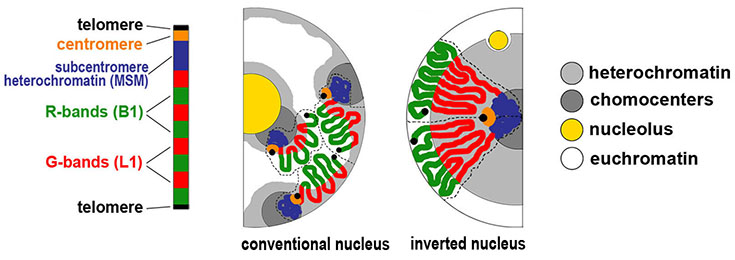Mechanisms of euchromatin and heterochromatin positioning in the nucleus
The spatial segregation of transcriptionally active euchromatin and silent heterochromatin in the nucleus plays an important role in the epigenetic regulation of genome function. Most eukaryotic nuclei have a conventional architecture with euchromatin residing in the nuclear interior and heterochromatin abutting the nuclear periphery and the nucleolus. In mammalian chromosomes, eu- and heterochromatin form alternating segments. To correctly position eu- and heterochromatin segments, chromosomes acquire a complex folded structure. The mechanisms of chromosome folding and the factors defining peripheral versus internal chromatin positioning, however, remain largely unknown. A unique exception to the conventional nuclear architecture is found in rod photoreceptor cells of nocturnal mammals. For optical reasons, rod nuclei exhibit an inverted nuclear architecture with heterochromatin concentrated in the nuclear interior and euchromatin forming a peripheral shell. By studying rod and conventional nuclei, we aim to understand the mechanisms that establish differential chromatin positioning in the nucleus.


Dr. Irina SoloveiMechanisms of euchromatin and heterochromatin positioning in the nucleus + 49 (0)89 2180-74223 |

